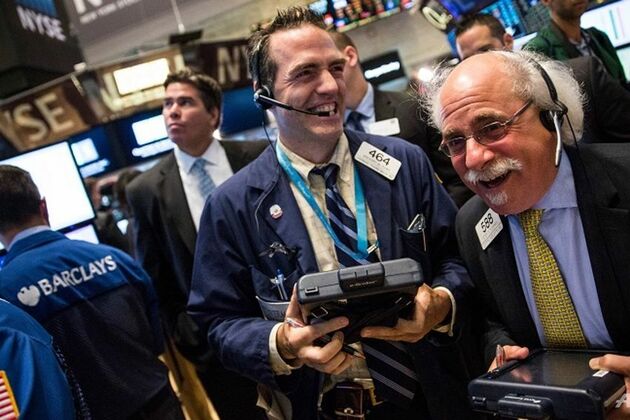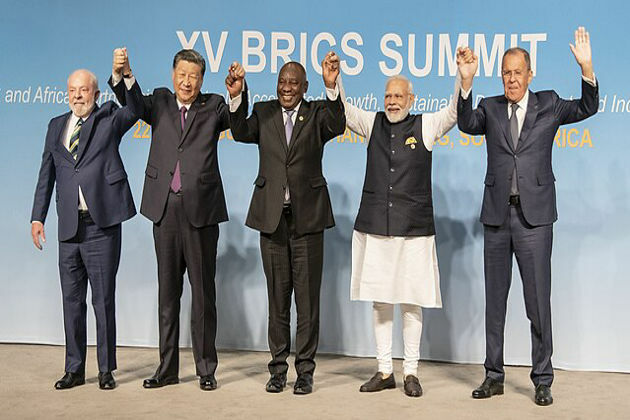How are Metaverse Solutions Changing Battle Tactics?
Evertise
08 Mar 2023, 12:54 GMT+10

The Metaverse has arrived as the gray area between the real world and the physical world. The Metaverse holds a massive amount of potential for the militaries with various virtual training sessions and simulations. During December, a modest office within the austere Air Force bureaucracy played home to a meeting attended by about 250 people. The meeting room featured standard whiteboards, sticky notes, and yellow folders.
But there was no physical conference room, and the participants were scattered around the globe, from the United States to Japan, and connected only via their Oculus headsets.
The guests were immersed in the Metaverse explosive if ambiguous, hype cycle. The United States and many middle eastern countries have started working on the Metaverse. Dubai is becoming the epicenter of Metaverse-related investments. So, investors should wisely choose a metaverse solution for military programs or training institutions.

Why Do The Military Need The Metaverse?
The military can gain plenty of lessons from the Metaverse technology. The defense sector can gain fresh value from the advent of the Metaverse. Let's examine the military applications of the Metaverse:
Recruiting And Hiring Top Employees
Attracting and keeping talented people in the military is a problem for every country. The Metaverse has tremendous potential for acquiring and keeping top personnel. It's a thrilling route to take. Hyper-personalized recruitment with the help of the Metaverse can increase participation. Prospective soldiers can acquire a feel for military life in the Metaverse. In addition, AI aids in locating persons from underrepresented groups, increasing the available pool of candidates.
In the workplace, Metaverse is a huge boon for efficiency and productivity. Military personnel frequently must switch between systems, such as when they diagnose a problem with a piece of equipment and another when they need field intelligence. The power of the Metaverse lies in its ability to facilitate the integration of disparate systems into a seamless whole. It's a huge boon to enhance the office atmosphere and keep good employees.
Military VR Training
Virtual reality provides recruits with practical experience fixing airplanes and equipment. They end up with a crystal-clear comprehension of the method. Recruits can build "muscle memory" for difficult real-world scenarios in simulated surroundings. Using the metaverse for military training means no risk of harm coming to anybody or anything. The United States Navy's Pilot Training Next (PTN) program uses virtual reality (VR). In the virtual battlefields developed by Improbable, up to ten thousand warriors can engage in combat simultaneously.
In October 2020, DARPA used augmented reality technology to pit an AI-controlled aircraft against a human pilot, demonstrating the increasing reliance on AI by the military. Soon enough, the robot pilot had surpassed the human pilot in skill. In light of the numerous advantages offered by Metaverse, nations have begun exploring its potential military applications.

Live AR Tools For Maintenance
Soldiers commonly employ Augmented Reality glasses built into helmets to help them operate mechanical equipment and learn new tasks. Instead of obstructing the user's view, the metaverse integrated into military hardware aid in presenting digital instructions. For instance, Boeing uses augmented reality to give technicians access to 3D wiring schematics that they can follow without using their hands, increasing efficiency and accuracy by 30%. The United States Army has inked a $21 billion contract with Microsoft for HoloLens to enhance the service's ability to make decisions across various battlefield conditions. The Lens has been adapted specifically for military use to boost efficiency and security in the field.
Has The Military Already Been Playing In The Metaverse?
The Pentagon had been experimenting with the concept of many interconnected virtual worlds for years before the term "metaverse" was even coined. Captain Jack Thorpe of the United States Air Force presented a report in 1978 detailing a system of interconnected, networked simulators for decentralized mission preparation. Years later, the project, now known as Simulator Networking (SIMNET), was taken up by the Defense Advanced Research Projects Agency and eventually transferred to the Army.
McArdle argued that the military has used "quite kind of clumsy metaverses" since the 1990s if a Metaverse is merely a set of interconnected virtual worlds.
In Neal Stephenson's dystopian science fiction novel "Snow Crash," published in 1992, the protagonist dons a virtual reality headset and enters the "metaverse," where his avatar works, socializes and engages in the occasional virtual sword fight.
Synthetic Training: A Metaverse Test Case
Synthetic Training is perhaps the most obvious application of networked virtual worlds in the military. While more soldiers are killed in Training each year than in actual battles, this device could be invaluable.
The Army's Synthetic Training Environment (STE) is being developed under the direction of Brigadier General William Glaser in Orlando, Florida; this technology could be classified as a metaverse due to its status as an interconnected virtual environment.
The STE is a virtual training environment (VTE) designed to supplement real-world Training by simulating various combat scenarios on any terrain, from urban to the mountain, that soldiers may confront in the Army. It will deliver training duties to "ground, dismounted, and airborne platforms and command posts at the locations of need," as stated on the Army's website.
Synthetic training environments are "basically a Metaverse that can be interconnected with the Metaverse," as Glaser put it; this is the kind of term critics cite when stating the Metaverse is ridiculous, while they may or may not be right. (Glaser is familiar with the Metaverse and thinks Snow Crash is an excellent work of fiction.)
McArdle said that Glaser's program qualified as a metaverse "if you're simply falling back on that notion" (that it is essentially a set of interconnected virtual worlds). "Now, many people will find fault with that, since they will try to find much more in it."
Communication:
Helping the troops talk to each other more effectively; soldiers must be able to interact with one another, as they are frequently stationed in isolated regions. Virtual reality (VR) in the military is assisting in inter-unit communication. If soldiers cannot meet in person, they can still communicate with one another in a virtual setting. In addition, this innovation can be utilized to prepare soldiers for actual battlefield conditions.
Planning And Strategy:
Improving one's capacity for strategizing Planning is crucial to the successful execution of a strategy, which is one of the most crucial components of combat. Virtual reality can aid in operational planning by providing a more realistic battlefield representation. Moreover, it can assist superiors in comprehending the strengths and weaknesses of their personnel and resources. Virtual reality can also prepare soldiers for battle by letting them practice new techniques and tactics in a safe environment. Defense and military personnel benefit greatly from virtual reality technology, and its use is only expected to rise.
Casualties:
On the battlefield, Aiding medical personnel in caring for injured patients and casualties is a normal part of life. Any injury, from a minor cut to a potentially fatal one, must be treated by military doctors. Historically, medical personnel relied solely on their education and fieldwork to treat patients. But now, they can utilize VR simulations to train for actual disasters. First responders can train in a simulated disaster zone using virtual reality technology. Students will be taught how to use the tools and respond to various injury scenarios. Metaverse Solutions in Dubai or virtual reality simulations that can also help military doctors work on their teamwork abilities, which are crucial in combat. Virtual reality training exercises have already been shown to be lifesaving on the battlefield. Undoubtedly, as technology advances, more lives will be spared thanks to virtual reality.
The Top 8 Benefits of Virtual Reality in Military Training
1. Enhances Realism
The increased realism provided by VR is one of its main advantages. During virtual training, soldiers are exposed to authentic environments with sights, sounds, and smells. They can better prepare for actual combat situations in this way.
2. Reduced Costs
Training expenses are another area where virtual reality shines. Instead of physically going to different places, soldiers can train in a simulated world that simulates the situations they will face. More savings can be made by using VR to train troops without placing personnel in harm's way.
3. Increased Engagement
Using VR to fully immerse soldiers in the training environment has boosted participation.
Engaged soldiers are more likely to remember what they learn in training.
4. Improves Safety
Virtual reality can also make the world a safer place. Soldiers can avoid potentially lethal real-life situations by practicing in a simulated one. Safety is further enhanced by the fact that virtual reality may be used to teach soldiers without really putting them in harmful situations.
5. Accelerates Training
Training can be accelerated with virtual reality since more training can be accomplished in less time. For soldiers to finish a course using the standard training methods could take weeks or months. Nevertheless, kids may get the same quality education in a fraction of the time by using virtual reality.
6. Customizable Training
Each soldier's training in virtual reality can be adapted to their own needs. Because of this, training can be more focused and beneficial for the soldiers involved.
7. Increased Accessibility
Because of virtual reality, more people can participate in training. The participants of a conventional training session must be present at the time and place of the session.
Yet, thanks to virtual reality, anyone with internet access can participate in practice sessions.
8. Enhanced Situational Awareness
Virtual reality increases situational awareness by completely immersing soldiers in the training environment and presenting them with real-time information about their surroundings. This improves their ability to assess risks and respond swiftly.
Finishing Up
Better engagement, enhanced training without deaths, and more effective tools for interacting with and digitally passing orders to soldiers on the battlefield are just a few ways in which the Metaverse has the potential to alter the military environment radically. The military's use of augmented reality technology is already remarkable; augmented reality and artificial intelligence work together to guide troops along the safest pathways. Future use of the military Metaverse could aid in keeping troops out of dangerous situations. The military should move forward with full integration with the Metaverse.
 Share
Share
 Tweet
Tweet
 Share
Share
 Flip
Flip
 Email
Email
Watch latest videos
Subscribe and Follow
Get a daily dose of Texas Guardian news through our daily email, its complimentary and keeps you fully up to date with world and business news as well.
News RELEASES
Publish news of your business, community or sports group, personnel appointments, major event and more by submitting a news release to Texas Guardian.
More InformationBusiness
SectionEx-UK PM Sunak takes advisory role at Goldman Sachs
NEW YORK CITY, New York: Former British prime minister Rishi Sunak will return to Goldman Sachs in an advisory role, the Wall Street...
Gold ETF inflows hit 5-year high as tariffs drive safe-haven bets
LONDON, U.K.: Physically backed gold exchange-traded funds recorded their most significant semi-annual inflow since the first half...
PwC: Copper shortages may disrupt 32 percent of chip output by 2035
AMSTERDAM, Netherlands: Some 32 percent of global semiconductor production could face climate change-related copper supply disruptions...
U.S. stocks recover after Trump-tariffs-induced slump
NEW YORK, New York - U.S. stocks rebounded Tuesday with all the major indices gaining ground. Markets in the UK, Europe and Canada...
Stocks slide as Trump unveils 25% tariffs on Japan, S. Korea
NEW YORK CITY, New York: Financial markets kicked off the week on a cautious note as President Donald Trump rolled out a fresh round...
BRICS issues rebuke on trade and Iran, avoids direct US criticism
RIO DE JANEIRO, Brazil: At a two-day summit over the weekend, the BRICS bloc of emerging economies issued a joint declaration condemning...
Business
SectionEx-UK PM Sunak takes advisory role at Goldman Sachs
NEW YORK CITY, New York: Former British prime minister Rishi Sunak will return to Goldman Sachs in an advisory role, the Wall Street...
Gold ETF inflows hit 5-year high as tariffs drive safe-haven bets
LONDON, U.K.: Physically backed gold exchange-traded funds recorded their most significant semi-annual inflow since the first half...
PwC: Copper shortages may disrupt 32 percent of chip output by 2035
AMSTERDAM, Netherlands: Some 32 percent of global semiconductor production could face climate change-related copper supply disruptions...
U.S. stocks recover after Trump-tariffs-induced slump
NEW YORK, New York - U.S. stocks rebounded Tuesday with all the major indices gaining ground. Markets in the UK, Europe and Canada...
Stocks slide as Trump unveils 25% tariffs on Japan, S. Korea
NEW YORK CITY, New York: Financial markets kicked off the week on a cautious note as President Donald Trump rolled out a fresh round...
BRICS issues rebuke on trade and Iran, avoids direct US criticism
RIO DE JANEIRO, Brazil: At a two-day summit over the weekend, the BRICS bloc of emerging economies issued a joint declaration condemning...







